- Mar 27, 2023
Use Floats & Jigs to Catch More Spring Crappie
Learn how a float and crappie jig can combine to help you catch more fish, especially during spring, when the crappie spend more time in shallow water.
It was like clockwork. If I made an accurate cast close to the right cover, allowed my jig to settle, and pulled the float just a few inches, as the jig settled again a crappie would yank the float out of sight. Oklahoma crappie guide Dustin McDaniel had the shallow spring bite dialed in, and a Bobby Garland Mayfly suspended a couple of feet beneath a float was the perfect rig for catching those fish.
The crappie were shallow and aggressive, and McDaniel had a lot of fish located, so we could have caught fish by swimming crappie jigs, moving closer to the edges and pitching or dipping baits, or fishing minnows under floats. However, we would have caught less fish – substantially less, I beleive – with any other approach. For how the fish were positioned and behaving – and often are during spring – no other rig or technique would have been nearly as effective as a float and a crappie jig.
Floats are often associated with live bait presentations, but to ignore the crappie catching potential of a jig beneath a float is a major mistake. A float allows you to effectively present a Mayfly, Baby Shad or Slab Slay’R in ways you simply cannot achieve without a float, and a crappie jig is far easier and more efficient than live bait, and often catches more fish.
Why a Float Rig?
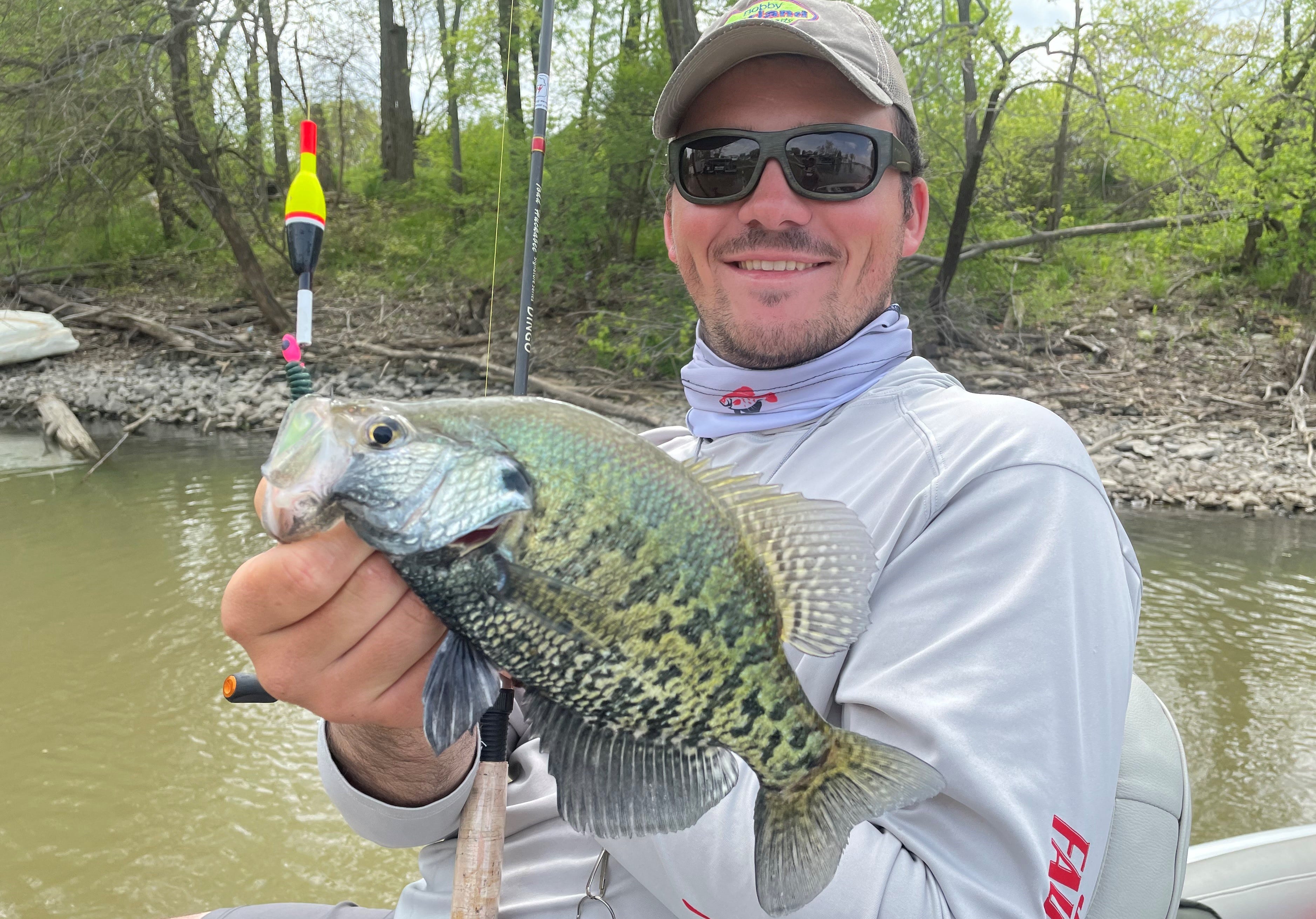

Floats provide multiple benefits for presenting jigs and soft-plastic crappie baits, including depth control and the capacity to slow presentations. Although not all float applications are shallow, floats become extra important during spring, when the crappie tend to be shallow.
Whether shallow or deep, depth control is a critical benefit of matching a float with a jig. Crappie can be very depth specific any given day. A float allows you to put a jig in the prime zone and keep it there without need to get directly over the fish and with various presentations.
A float rig also allows you to slow presentations but keeps baits off the bottom, even in shallow water. Often the crappie don’t want a bait swimming past horizontally, even if crosses the prime spot and is at the right depth. They want it suspended in the zone, moving slowly or even not moving, and a float allows for that type of presentation.
Another practical advantage of adding a float to your crappie jig rig is that it provides added weight to cast a jig far enough and with the accuracy that is sometimes required to get your bait in the right place. The casting weight advantage is extra important when it’s windy, which is common during spring, and when you are using extra small jigs.
I final float advantage that sounds elementary but that ought not be overlooked is that a float lets you know what’s happening beneath the surface, which can be extra important for hooking crappie when bites are light.
Choose the Right Float
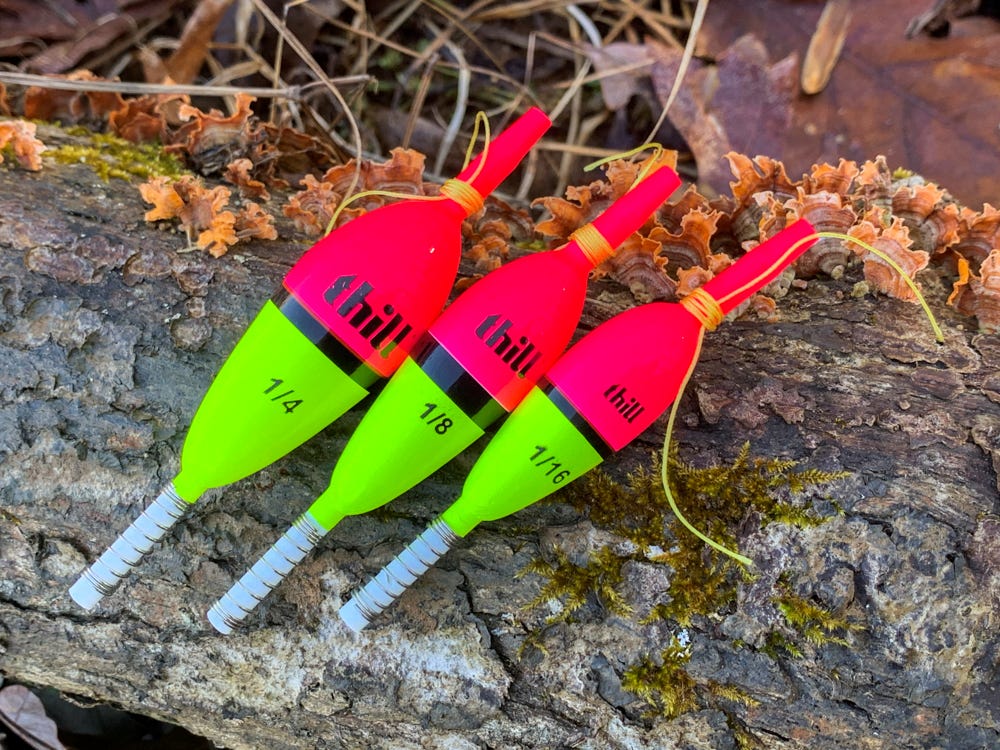

The float selection decision begins with a question of set float vs. slip float. A set float rig is the simplest and quickest to rig and allows you the option of quickly removing your float for other presentations. If you want to suspend a bait more than a few feet deep, though, a set float rig becomes awkward to cast, making a slip float a far better option.
During spring, when fish are often only a couple of feet deep, a set cork works fine and is the go-to for many anglers. That said, some fishermen use a slip cork exclusively because they can make longer and more accurate casts without the space between the float and the weight or jig.
Size is another important consideration, and with most float types, picking the best size might require experimentation. For maximized sensitivity and to minimize resistance felt by the fish, you want a float that stays afloat with your bait beneath it but with nearly neutral buoyancy, so even a light tug begins pulling it under.
Various shapes will work, but an oval or pear or a stout cigar shape are among the best options for castability, handling a bit of wind, standing up when the jig is in place, and allowing you to add action to your jig.
If you don’t want to carry slip floats and set floats, the Thill Crappie Cork provides an excellent option. This well-balanced balsa float is designed so it can be rigged as a slip float or as a spring-style set float. The initial bobber stop knot for slip-floating actually comes with the float and is on the top stem. You just slide it off the top, onto the line, and tighten it. The Crappie Cork also simplifies the size/balance question. It comes in three sizes, which are designed to suspend 1/16, 1/8 and 1/4 ounce of weight, and the weight rating is printed on the float.
Float Rig Presentations
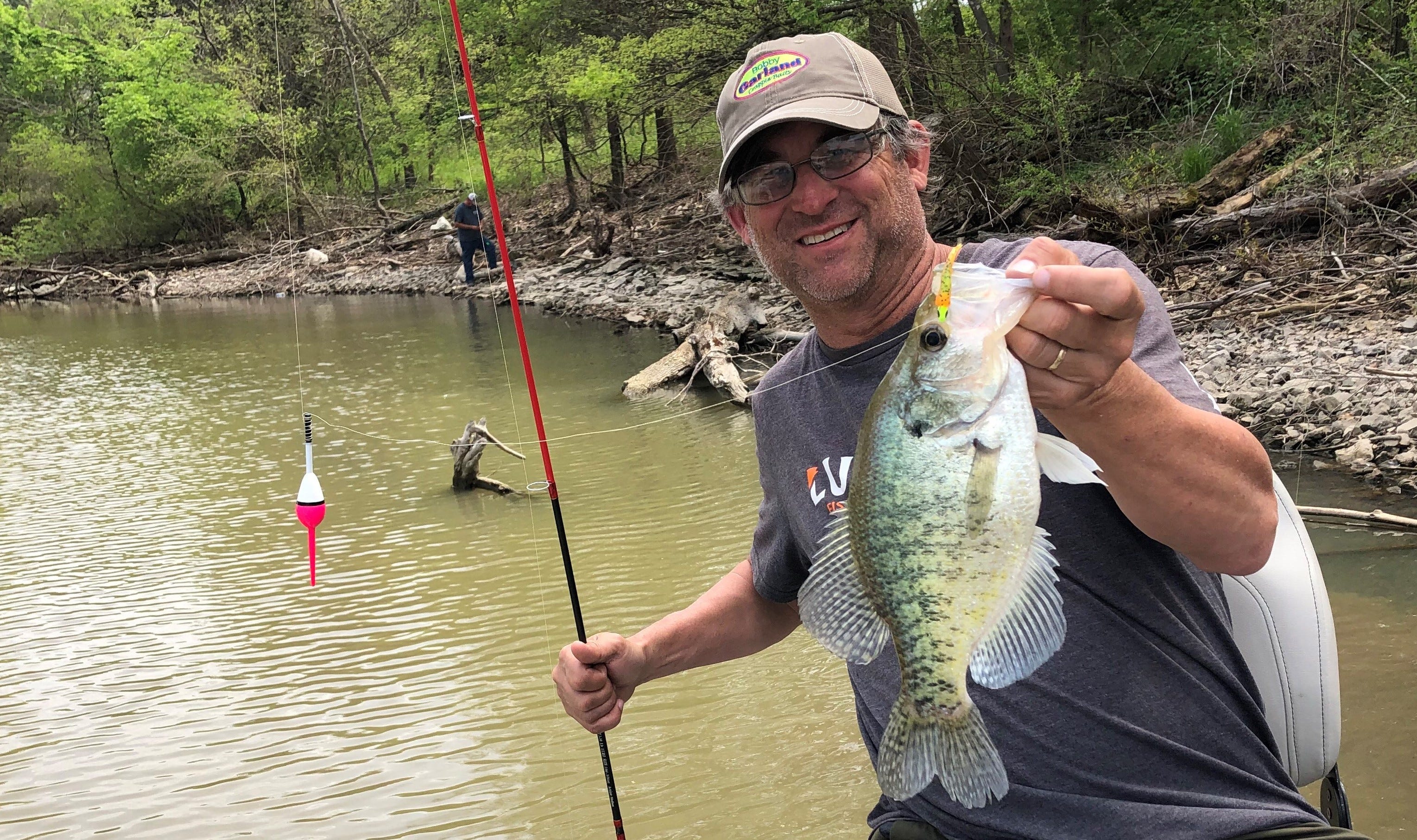

One significant difference between fishing a jig beneath a float and fishing live bait beneath a float is that you must work a lure rig, most of the time. That said, less is more, virtually all the time, for adding action.
Occasionally, the best way to present a jig beneath a float is to add zero action with the rod or reel and to let the movement from wind or wave action or the bait’s natural quivering do all the attracting work for you. “Do nothing” approaches tend to work best in two primary situations.
When fish are holding very tight to specific, isolated pieces of cover sometimes the best approach is to pitch to a target, let the bait fall to the zone and just let it hang there for a couple of minutes. If a fish doesn’t take it, pull it out and pitch to the next target. The other situation involves crappie that are more widespread, when enough wind or current exists so you can cast upwind or upcurrent and let the rig drift across through the zone, reeling only enough to manage line.
More often, jig/float rigs call for slightly more active presentations, with the float moved in a way to give life to the jig beneath it and/or to cover more water.
Arguably, the most dependable strike producing action comes from short “pulls” of the rod. NOT snaps or jerks. The action is slower, and more of a sweep, except it’s a very short sweep that doesn’t move the float more than 6 inches with any one pull. Often, half that. The jig rises slightly as it moves sideways and then it swings back down, with both the lift and the drop triggering the bait’s natural action
An alternative to a pull that is frequently key to prompting strikes is a “jiggle” of the rod tip, which makes the float rock and causes the jig beneath it to dance. A perfect jiggle makes the float dance but doesn’t move it horizontally – initially, at least – to coax strikes from fussy fish.
Another presentation that can be highly effective is to let the jig settle beneath the float and then just reel steadily and very slowly, so the bait moves but it stays at the right depth. Crappie don’t typically choose to chase something that’s moving very quickly, but if likely prey is slowly moving away, they’ll often grab it before opportunity gets away.
Finding the best movement (or right combination of movements) and the best cadence of movements and pauses is definitely a patterning game. Experiment and pay attention to what the crappie show you!
Great From the Bank
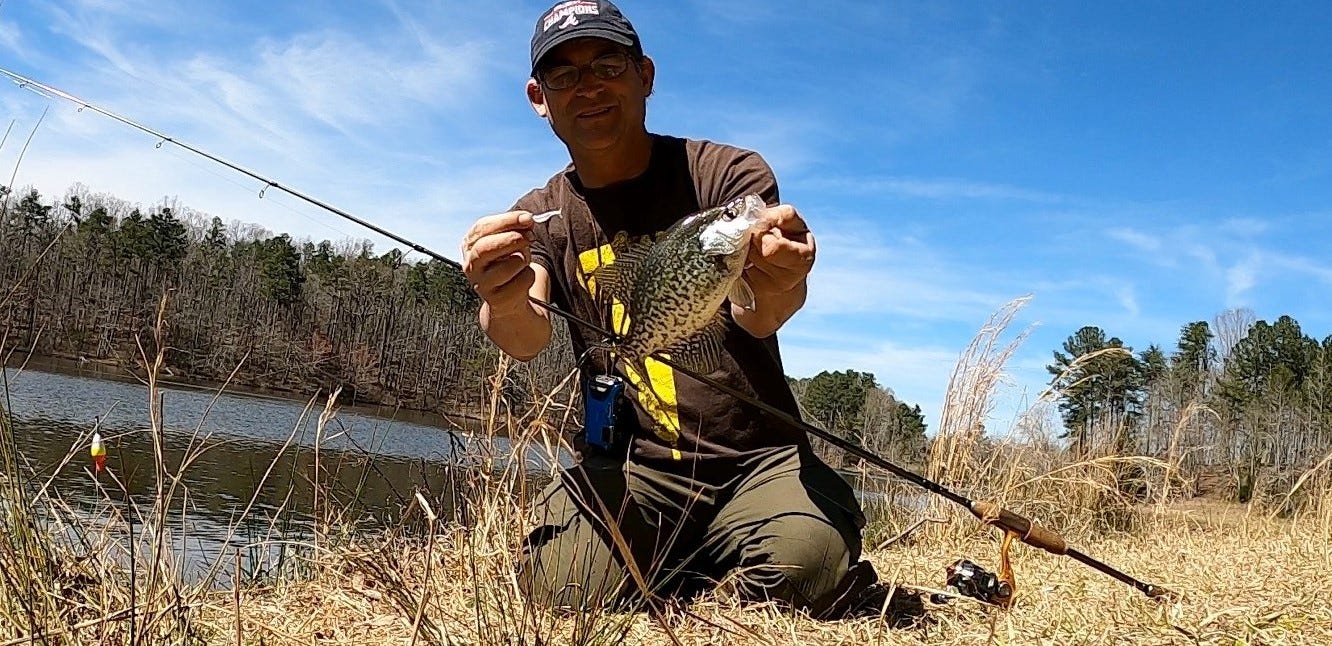

One of the best things about a float rig for spring crappie is that it works extremely well from the bank and allows shoreline anglers to slow presentations and present jigs efficiently at prescribed depths. That is critical anytime a stump, rock, brushpile or bridge support is more than a rod’s length from the bank, making it impossible to simply dip the bait in the prime zone.
A float allows you keep a bait in a very specific zone – maybe next to a bridge support or near the end of a laydown branch – but it also allows you to work broader areas like flats but to keep the bait at the optimal depth at all times. That’s important when you’re trying to find fish from the bank.
Both set floats and slip floats are important components in any bank fisherman’s crappie fishing box.
4 Great Baits to Fish Beneath a Float
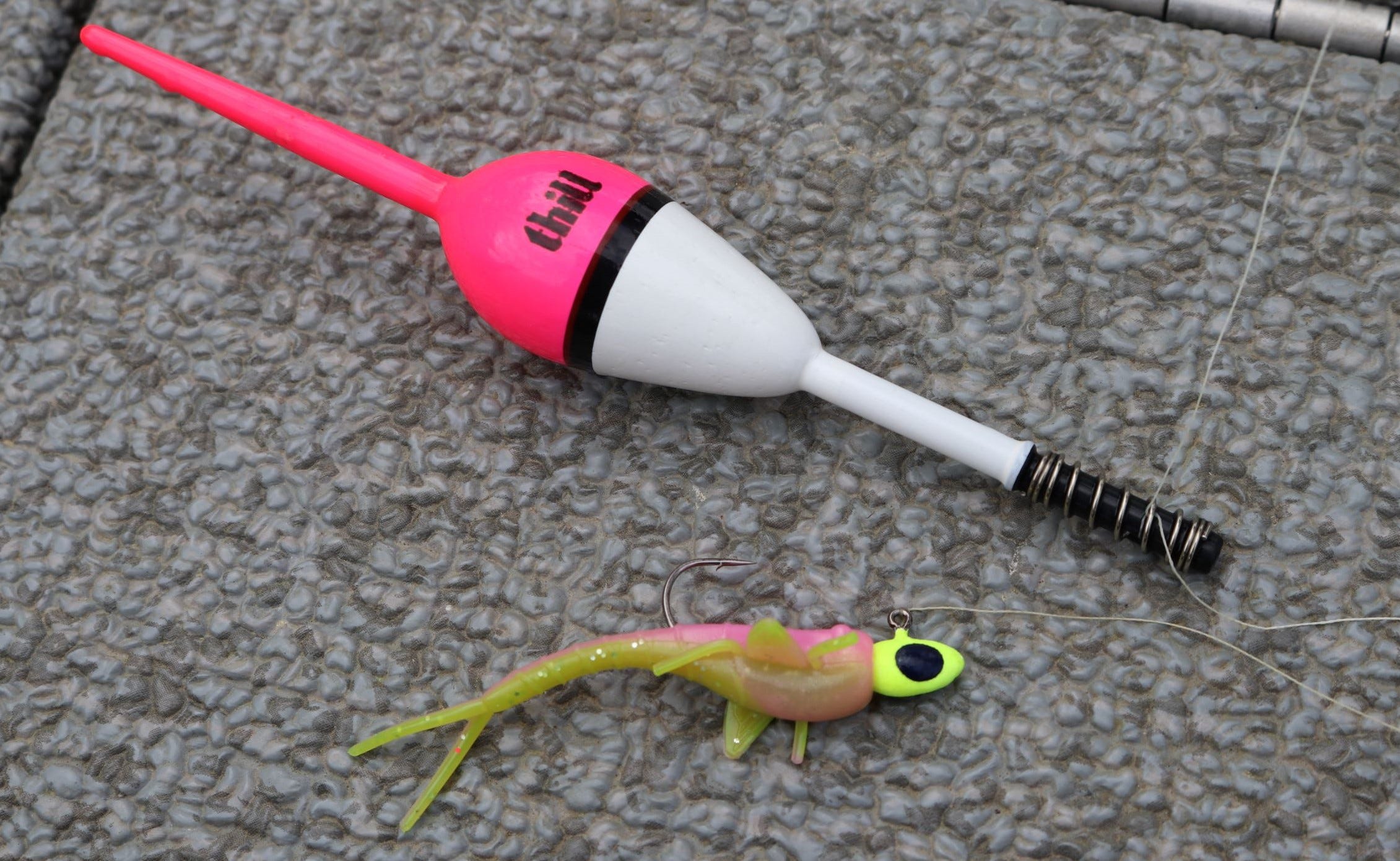

- Baby Shad – The standard for crappie baits, the Bobby Garland Baby Shad is ideal for suspending beneath a float because the tail never stops moving in the water.
- Mayfly – The new Mayfly provides an outstanding option during spring, when crappie feed heavily on aquatic insects.
- Slab Slay’R – The Slab Slay’R offers an irresistible glide and dart when you pull the cork to lift the bait and allow it to fall again, and the tail quivers irresistibly.
- Itty Bait Swim’R – The Itty Bit Swim’R provides a spectacular option when the crappie get fussy and when they are feeding on extra small forage.



